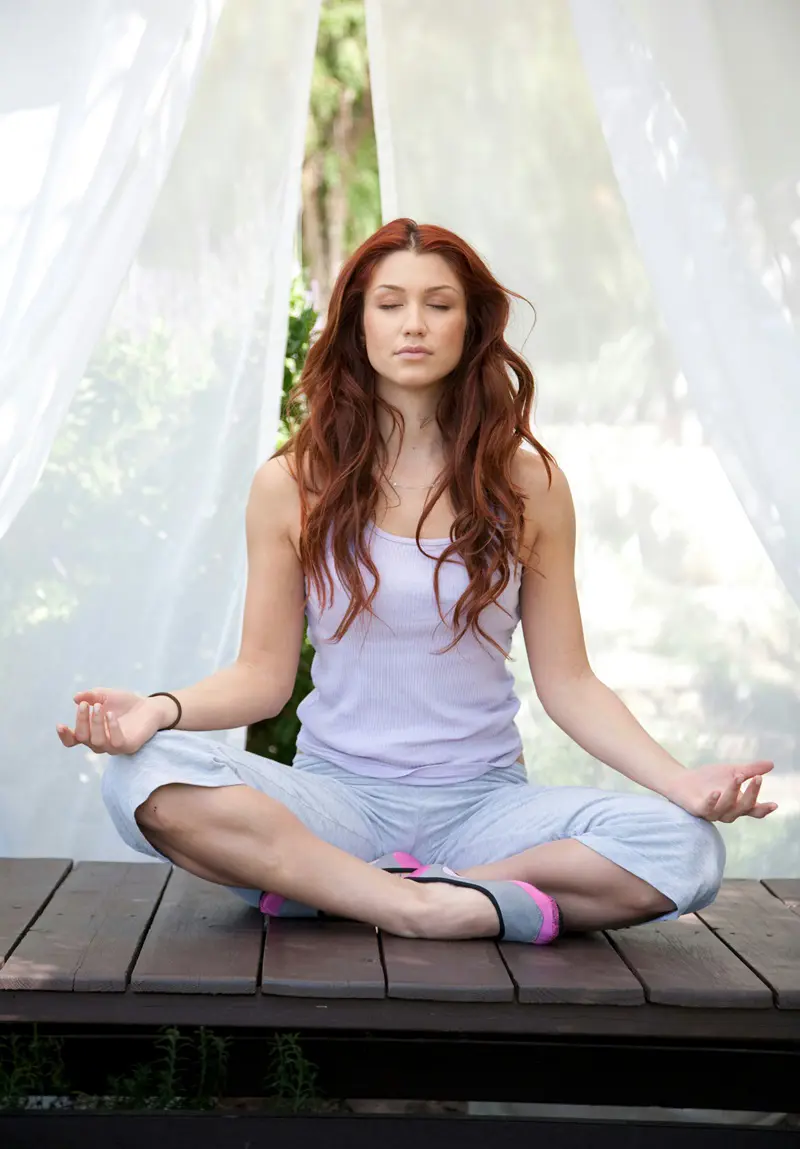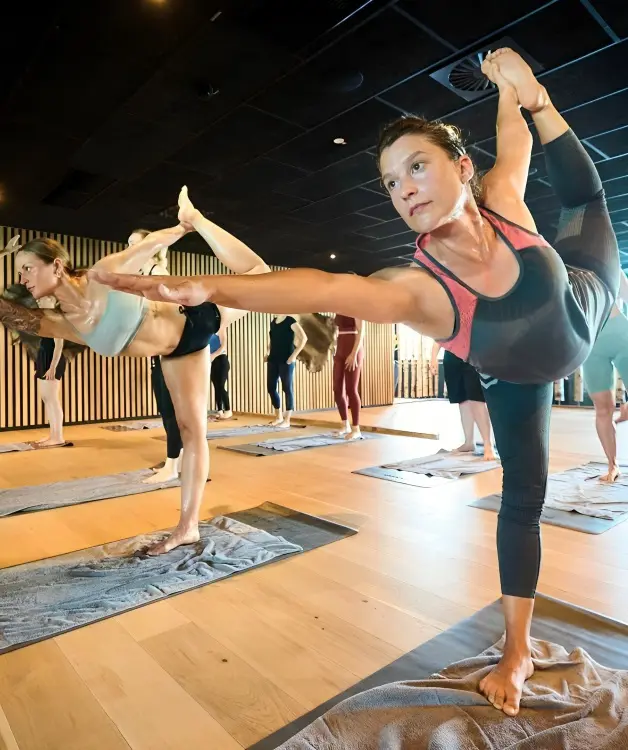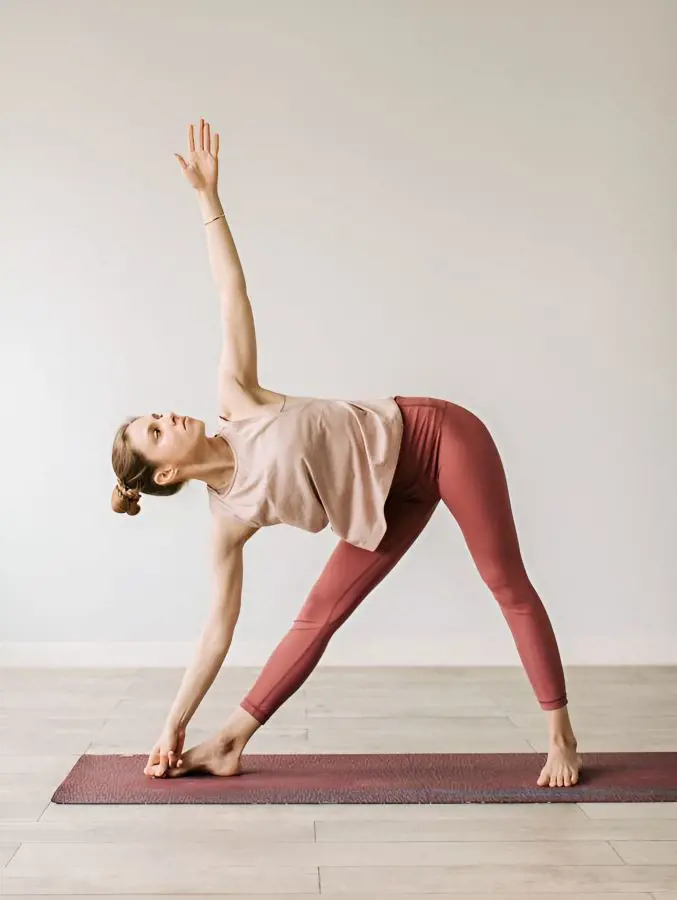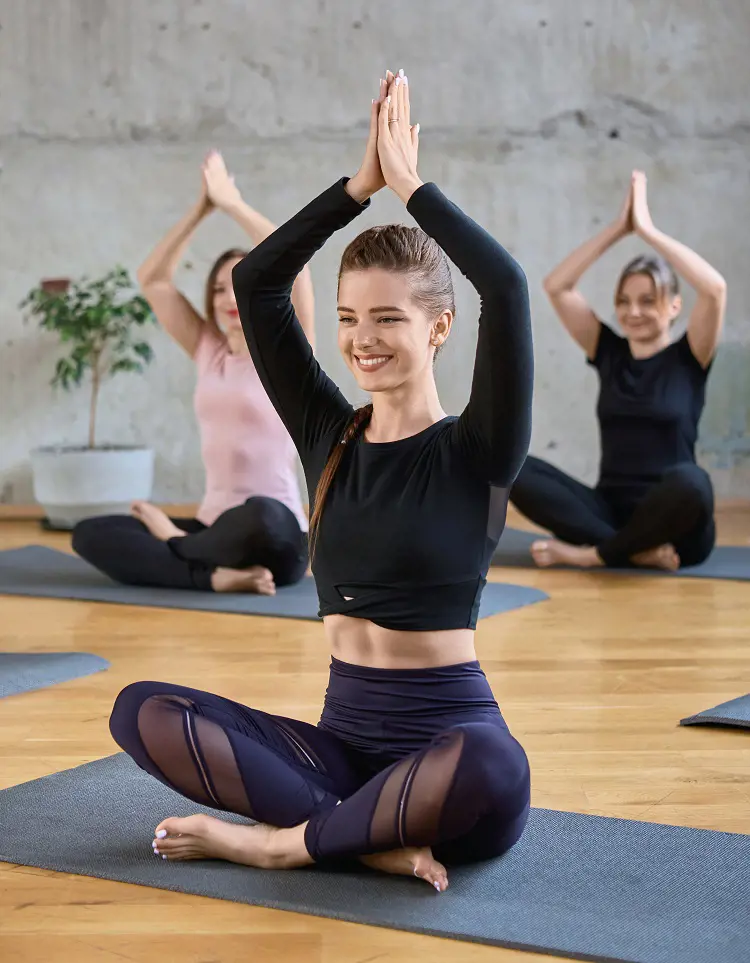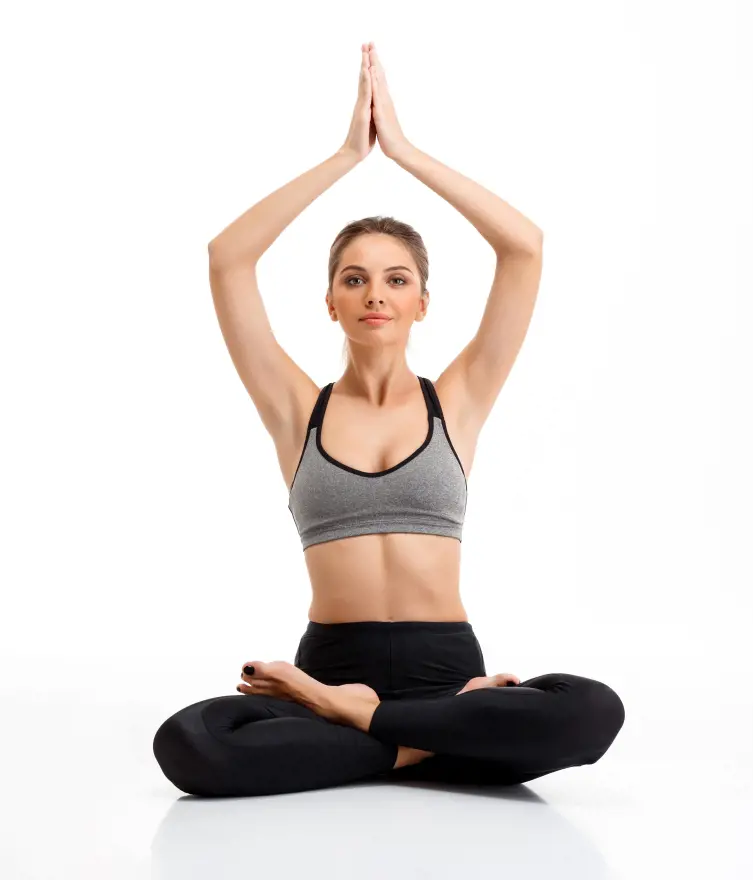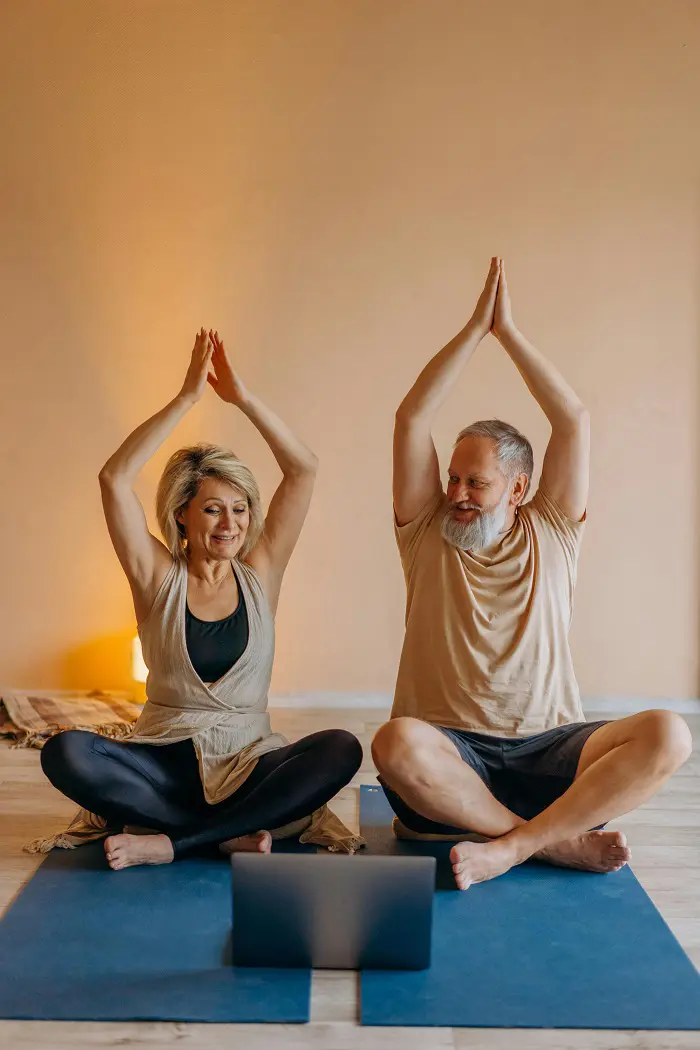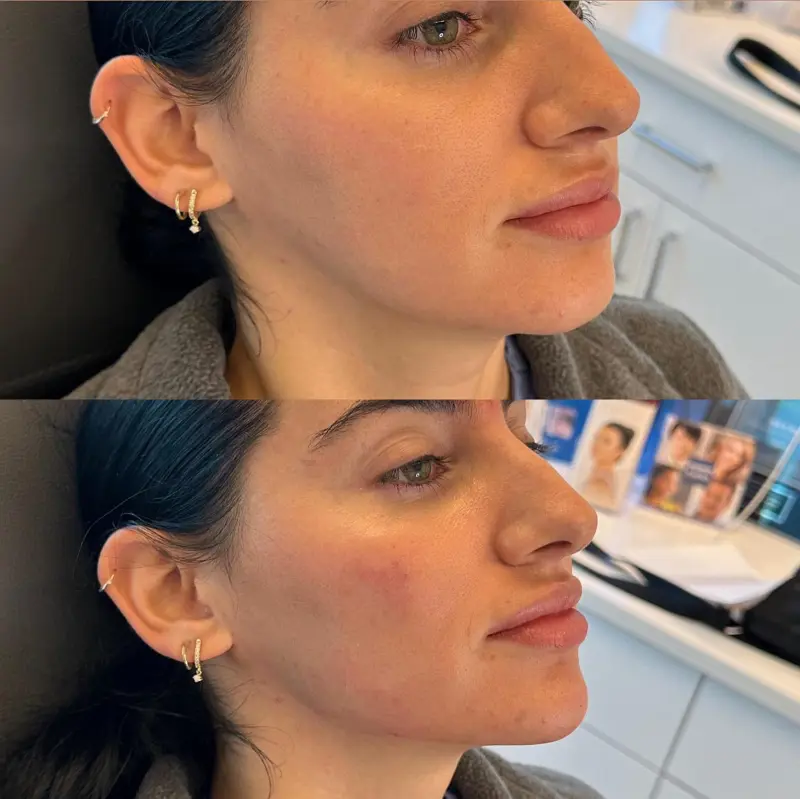15 Yoga Stretches You Can Do Everyday

People have been practicing yoga since ancient times, combining physical postures, breathing exercises, and meditation. These routines offer many benefits for both your physical and mental health. They include improved flexibility, strength, and balance, and an enhanced mood. There are many different styles of yoga, but all of them can be adapted to fit any level of experience.
If you are new to yoga, starting with a few simple poses each day is a great way to begin. These stretches can be done at home, at work, or even as part of a bedroom exercise routine. They effectively reduce stress and anxiety, offering a simple way to boost mental and physical health. Embark on a journey with us as we introduce 15 yoga stretches for your everyday routine.
1. Cobra Pose
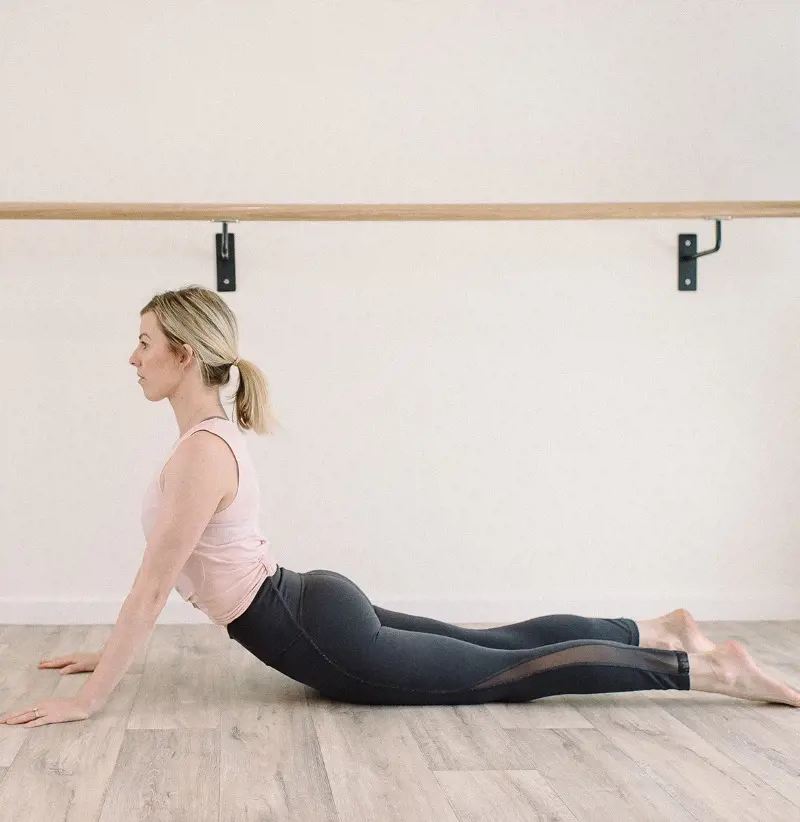
Cobra pose, also known as Bhujangasana, is a powerful yoga backbend that resembles the graceful arch of a cobra's hood. To perform it, lie face down with your hands under your shoulders and lift your upper torso off the mat, keeping your hips pressed down. Engage your core, lengthen your spine, and open your chest, directing your gaze slightly upwards. Hold for a few breaths, then gradually release back down.
This pose helps strengthen your core and back muscles and improve flexibility in your spine and chest. Additionally, it opens up your lungs for better breathing, massages your internal organs, and boosts your energy levels. Regularly practicing this posture can also help alleviate fatigue and stress, leaving you feeling refreshed and invigorated.
2. Warrior II
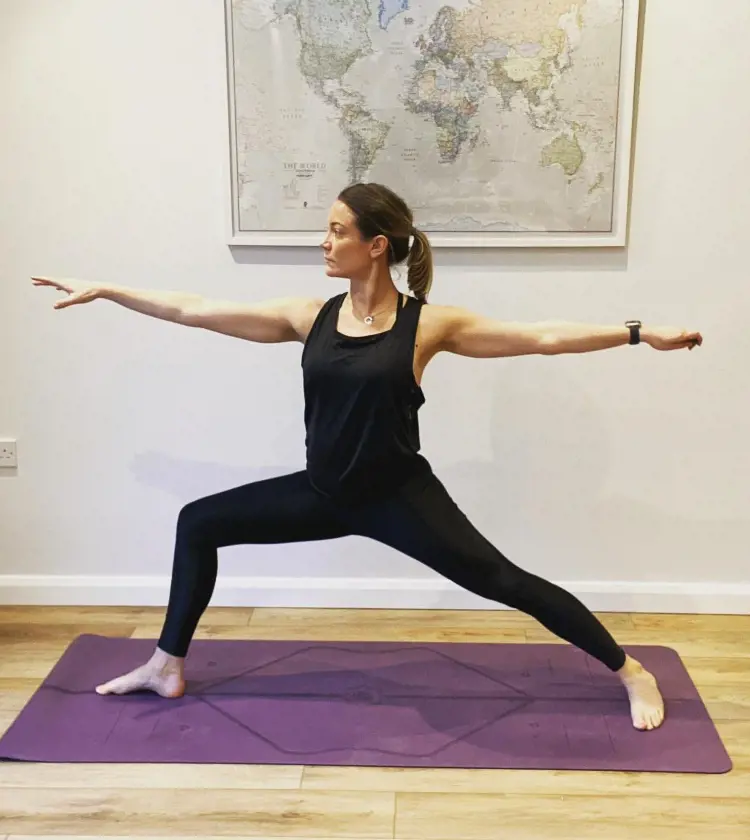
Warrior II is a dynamic standing pose in yoga that embodies the power and grace of a warrior. This practice fortifies and stretches major muscle groups and fosters a sense of your inner strength and confidence. Standing strong like a warrior and breathing with focus build further on this foundation, helping you nurture a positive mindset.
To begin your Warrior II pose, start from Mountain pose, step one foot back, and bend your front knee to 90 degrees. Square your hips, feel that core engagement, and stretch your arms like a powerful shield. Keep your gaze confident, hold it, and sense that strength. Then, switch sides to maintain balance.
3. Cat-Cow Pose
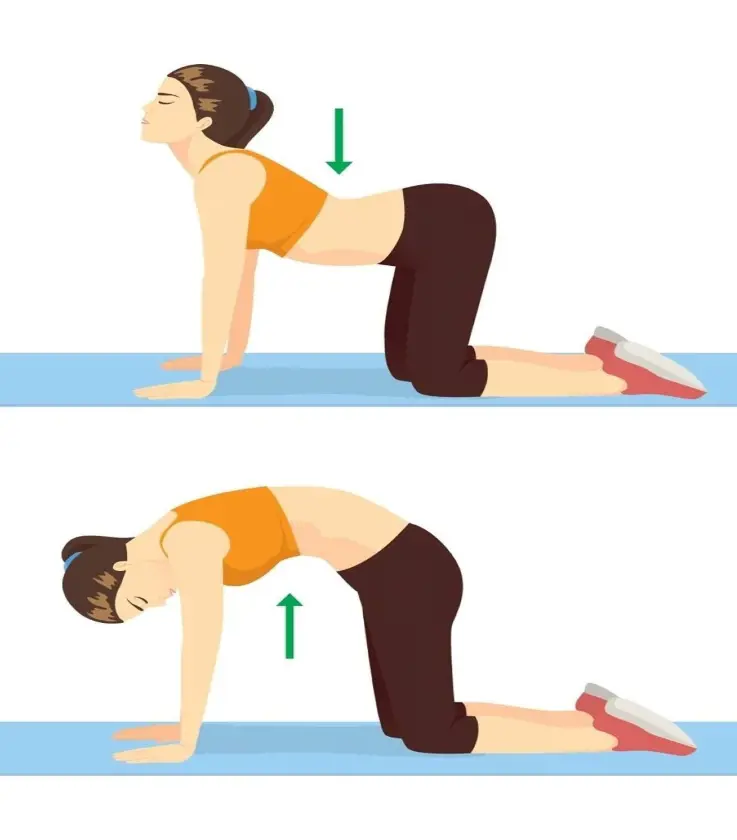
The Cat-Cow pose in yoga involves a gentle flow between two positions, resembling the arching and rounding of a cat and a cow, respectively. This dynamic sequence serves as an effective warm-up for the spine, promotes better posture, and offers a mindful connection between breath and movement.
To perform this yoga, start on your hands and knees. Now, round your back, tuck your chin, and bring your belly toward your spine. Then, transition to the Cow pose by dropping your belly towards the floor, lifting your head, and arching your back. Flow between these two positions, coordinating the movements with your breath. Repeat the flow for a gentle and effective warm-up in your yoga practice.
4. Child's Pose
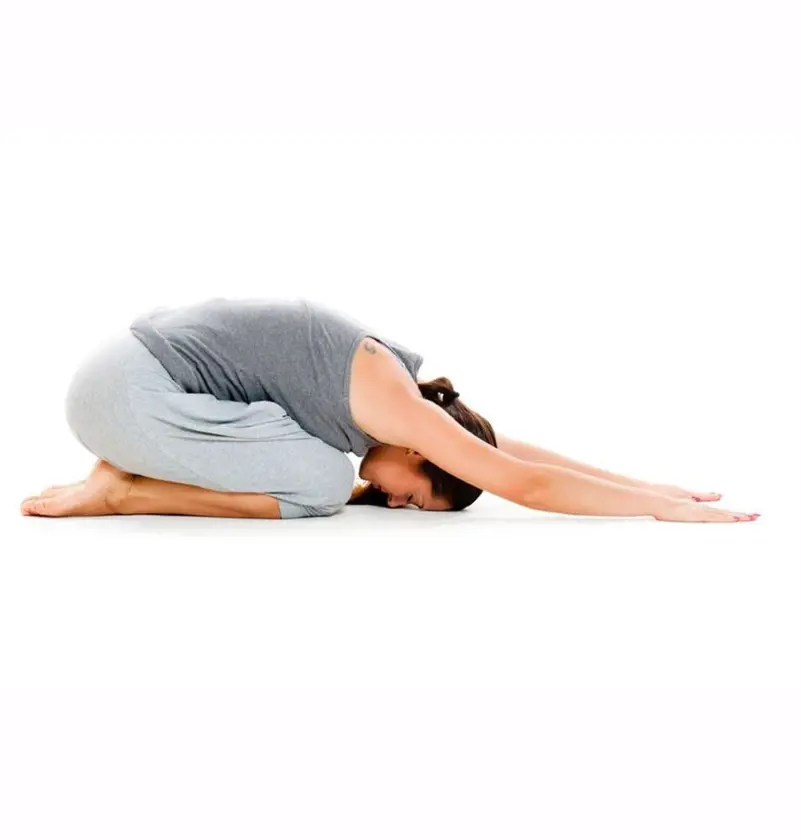
To perform Child's pose, begin by kneeling on the mat with your big toes touching and knees spread apart. Sit back on your heels and then fold forward, reaching your arms out in front of you. Rest your forehead on the mat, lengthen your spine, and relax. This gentle stretch is a resting posture that promotes relaxation and provides a moment of rest and introspection during your practice.
Child's pose is incredibly versatile in yoga. Use it between challenging poses, as part of your cool-down, or whenever you need a stress-relieving break. This stretch is beginner-friendly. It can be adapted for pregnant individuals or those with lower back pain. Just listen to your body and modify it as needed. If you are in doubt, you can seek guidance from a yoga instructor.
5. Crescent Moon Pose

The Crescent Moon pose is usually good for people at different fitness levels, but it might not be right for everyone. It is advisable for individuals without significant knee issues or injuries. Also, pregnant women might need modifications, and anyone with specific health concerns or injuries should consult with a qualified yoga instructor before attempting this posture.
This lunge is great for your hips and quads like moonlight easing tightness and making you more relaxed. Extend your arms up, with palms toward each other. Feel your chest open and your spine lengthen. Keep your core strong, ground yourself, and stretch your back leg with the heel down. Hold, breathe, and feel the strength. Do the same on the other side, following the Crescent Moon pose for a balanced body.
6. Triangle Pose

The Triangle pose, known as Trikonasana in yoga, can be practiced as part of a sequence or as a standalone pose. It is commonly included in Hatha and Vinyasa yoga routines. You can incorporate this exercise into your warm-up or cool-down sessions, ensuring you practice on a relatively empty stomach. But remember to listen to your body, prioritizing comfort in the posture.
To begin this exercise, stand tall, feet hip-width apart, and extend your arms like wings. Now, step right foot 90 degrees to the side, firmly anchoring the heel. Inhale, lengthen the spine, and reach your right hand down the leg. Extend the left arm skyward. Gaze up, feeling a gentle stretch. Breathe and hold, then switch sides.
7. Pigeon Pose
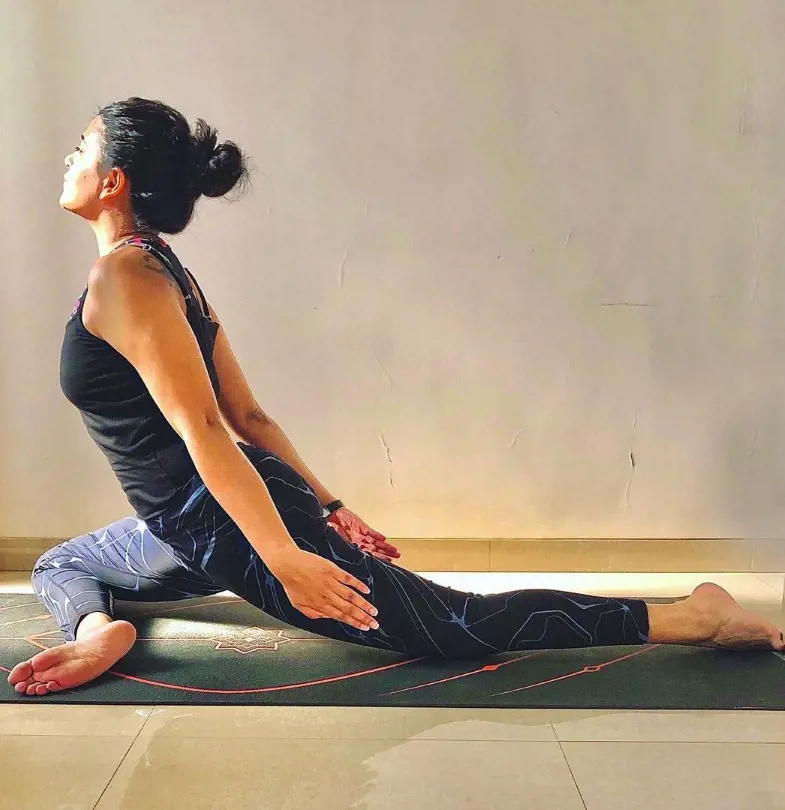
In this yoga pose, one leg is bent in front of the body, creating a right angle with the knee and extending the foot outward, while the other leg stretches straight behind, forming a line. This dynamic stretch serves as a profound hip opener, offering an intense stretch to the thighs and effectively releasing tension in the lower back.
Pigeon pose is particularly valuable for individuals with sedentary lifestyles and can serve as preparation for more challenging hip stretches. Besides its physical benefits, this pose is often integrated into yoga practices to encourage mindfulness, as it can be both physically and emotionally revealing.
8. Lotus Pose
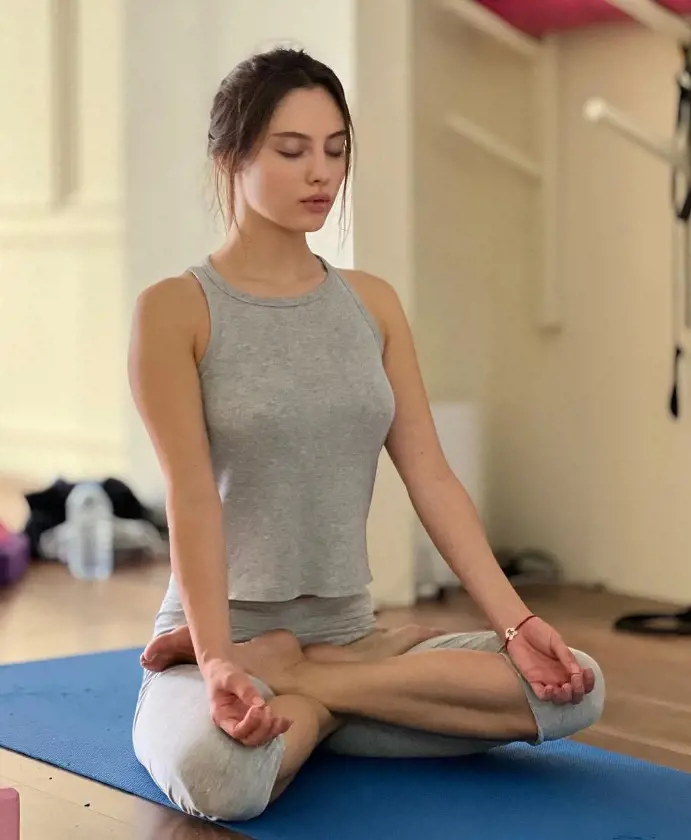
In yoga, the Lotus pose comes in two versions. The first is Half Lotus, where one foot rests on the opposite thigh. The second is Full Lotus, a more advanced form where both feet rest on opposite thighs. The Full Lotus needs more flexibility. So, It's important to take your time with these postures and explore alternatives if necessary, especially if you have any hip or knee concerns.
People often use this practice for meditation, as it helps promote mindfulness through its deep hip opening. Apart from meditation, this pose enhances overall mobility, particularly in the hips and knees, leading to improved joint health.
9. Shoulder Rolls

Yoga stretches for flexibility, such as shoulder rolls, are beneficial for enhancing overall joint mobility and reducing muscle tension. This movement involves rotating the shoulders in circular motions, typically in both forward and backward directions. To perform shoulder rolls, you gently lift your shoulders towards your ears, move them backward in a circular motion, and then bring them back down.
Engaging in shoulder rolls helps increase blood flow. Shoulder rolls are often incorporated into warm-up or cooldown routines in yoga sessions to improve shoulder flexibility and release any accumulated tension in the upper body.
10. Bow Pose
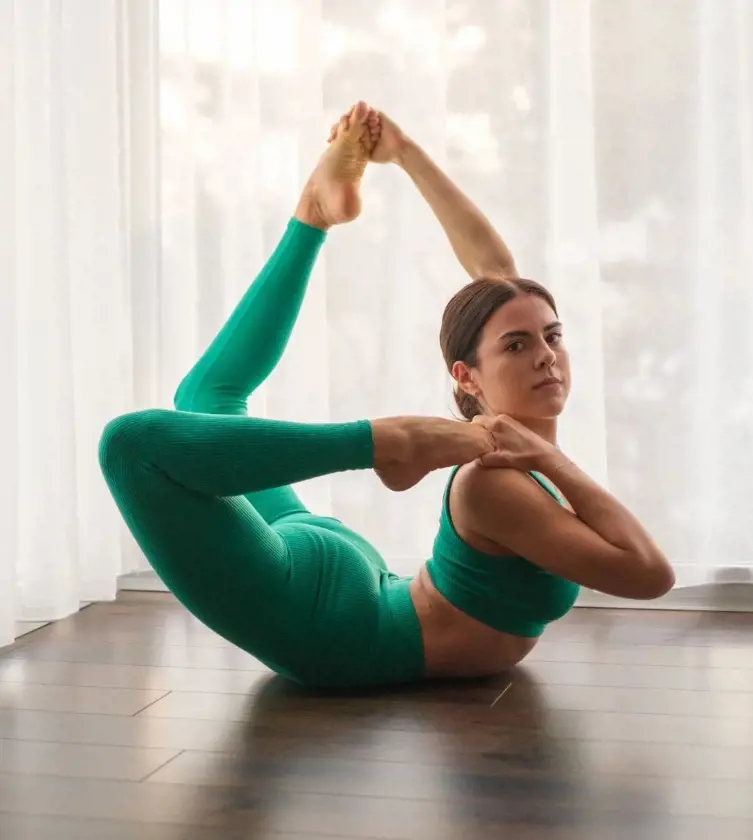
Bow pose also referred to as Dhanurasana, is a backend yoga posture. This practice is classified as both a back extension and a heart opener. In this yoga, the body forms a shape resembling an archer's bow, with the chest and thighs lifted off the mat, and the arms reaching back to hold the ankles. This workout actively engages and strengthens the back muscles, especially the spine's muscles.
This practice is considered an intermediate to advanced yoga pose. It offers various physical and mental benefits, including improved posture, increased spinal flexibility, and an energizing effect on the entire body. It is essential to approach each stretch mindfully and listen to your body, especially if you have any existing back issues or injuries.
11. Bridge Pose

In Bridge pose, the practitioner lies on their back, bends their knees, and lifts their hips towards the ceiling, creating a bridge-like shape with the body. Just like Bow pose, this stretch actively engages and strengthens the muscles of the back, particularly the spine's muscles, as well as the muscles in the buttocks and thighs. It also opens the chest and stretches the front of the body.
You can practice this yoga at a time that suits your schedule and energy levels. Many people find it beneficial in the morning to energize the body or in the evening to unwind. If you are feeling stressed, this stretch is a good choice to help relax and lift your mood.
12. Tree Pose
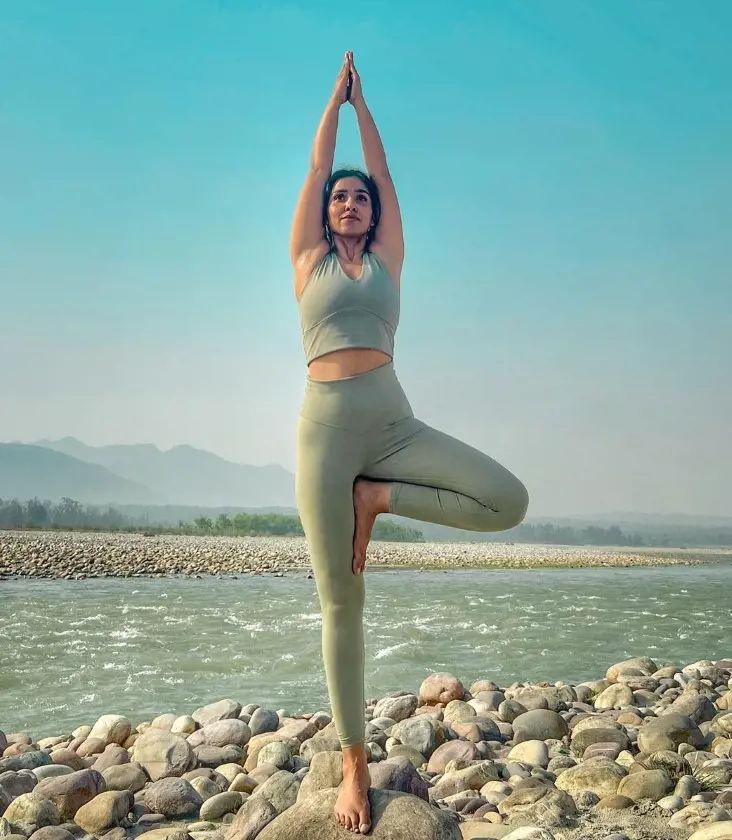
Tree pose, also known as Vrikshasana, falls into the category of balancing poses. Balancing poses in yoga contributes to improved focus, stability, and strength. This exercise specifically enhances balance and concentration while promoting alignment and flexibility in the legs. Commonly found in various yoga styles, including Hatha, Vinyasa, and Iyengar, it adds versatility to your practice.
To perform this, start in a mountain pose. Shift your weight to one foot and place the other foot on the inner thigh or calf, avoiding the knee. Bring your palms together in front of your chest or extend your arms overhead. Engage your core, maintain a steady gaze, and hold for 30 seconds to a minute. Switch sides and repeat.
13. Neck Rolls
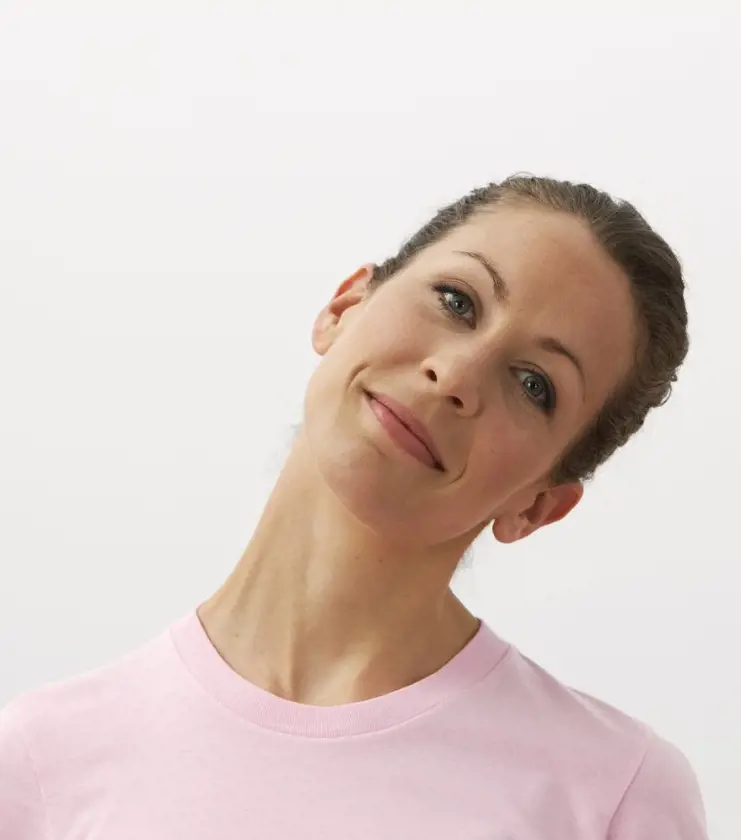
Neck Rolls are a type of stretching exercise in yoga that focuses on releasing tension and promoting ease in the neck and shoulders. This gentle movement involves circling the neck in both clockwise and counterclockwise directions, promoting relaxation and mobility. They are particularly beneficial for reducing stiffness in the neck, improving circulation, and enhancing overall neck and shoulder comfort.
Neck Rolls, being a gentle stretching exercise, are generally suitable for most individuals, including beginners. However, individuals with severe neck issues or injuries should approach this pose with caution. You can perform this exercise at various times, such as in the morning to alleviate stiffness or during breaks to release tension from prolonged sitting.
14. Downward Facing Dog
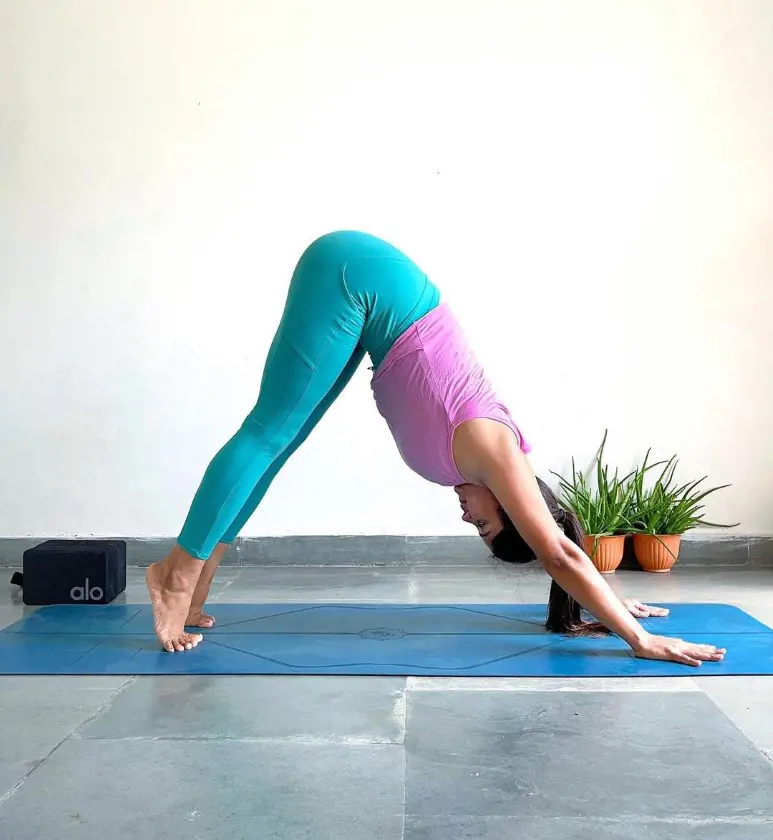
Downward Facing Dog, commonly known as Adho Mukha Svanasana, is a fundamental yoga posture. This pose stretches your entire body, particularly the hamstrings, calves, shoulders, and spine. It also strengthens the arms, legs, and core. Downward Facing Dog is often used as a resting pose between sequences, promoting flexibility and overall body awareness.
In this yoga, start on your hands and knees, then lift your hips towards the ceiling, straightening your legs and reaching your heels down. Your body creates an inverted V shape, and your arms stretch out with hands shoulder-width apart. It's a basic posture that feels like a gentle stretch for the whole body.
15. Corpse Pose

Corpse pose, often recognized as Savasana, serves as a relaxation pose in yoga. It is typically practiced at the end of a yoga session during the final relaxation, allowing the body and mind to rest and integrate the benefits of the practice. Savasana involves lying on your back with your legs extended and arms at your sides, focusing on conscious breathing and releasing tension from the body.
After doing the active yoga moves, people switch to Savasana to relax and let their bodies soak in the good stuff. It's like a cool-down that helps the mind and body chill out after all that movement. This restorative pose is considered essential for achieving a sense of closure and facilitating a smooth transition from the heightened awareness of the practice to a state of restful stillness.
Recent posts
Yoga
Yoga
13 Breathing Techniques To Bring Calm And Relieve Anxiety
Practicing breathing techniques can be extremely helpful in soothing anxiety and bringing a sense of calm. They are easy to perform and provide a faster way to induce relaxation. However, with so many techniques out there, choosing the best ones can ...
Yoga
15 Health Benefits of Hot Yoga to Heat Up Your Fitness
Do you feel like you're stuck in a monotonous yoga routine? Ever wish for a yoga session that challenges your body to drip sweat? Imagine walking into a room filled with heat, where every move tests your strength, flexibility, and determination. If y...
Yoga
14 Awesome Yoga For Lower Back Pain
Lower back pain is a common complaint, impacting millions of people worldwide. It can result from various factors, including poor posture, muscle imbalances, and injuries. Fortunately, yoga offers a gentle and effective approach to alleviating pain a...
Yoga
15 Yoga For Beginners To Mindful Well Being
Yoga isn't just about doing cool poses that you see on TV or in advertisements. It's way more! Besides the physical exercises (called asanas), yoga includes self-disciplinary practices, such as meditation, chanting, mantra, breath work, prayer, ritua...
Yoga
14 Types Of Yoga And Their Health Benefits
Yoga is an ancient practice that combines physical postures, breathing techniques, and meditation to improve overall health. It is performed on a mat and can be done at any time, with many people choosing mornings for a fresh start. The practice offe...
Yoga
17 Best Yoga Poses For A Couple
Yoga poses for two people can help you discover the power of shared connection through the ancient art of yoga. Whether you're looking to strengthen your relationship, build trust, or simply add an exciting twist to your practice, practicing yoga wit...
